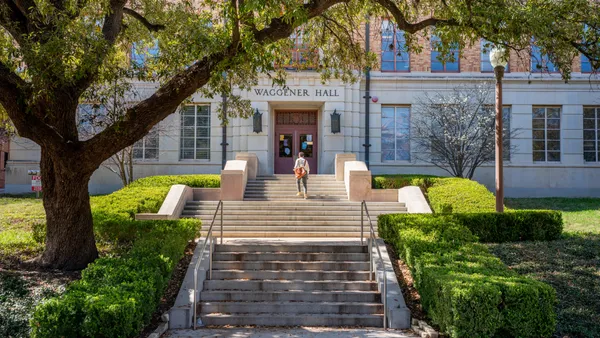Dive Brief:
- In a guest post for Evolllution, Shabana Figueroa and Yakut Gazi of Georgia Institute of Technology's Professional Education (GTPE) division detail how the institution worked to develop an efficient design approach for its second entirely-online master's degree program, which would also improve student user experience studied from the launch of the first online degree.
- Among these strategies, the authors write that for site development GTPE created a group cross-functional group of independent instructional design and studio teams, the director of learning met one-on-one with faculty members to figure out course content and teaching styles and attended some in-person class sessions for inspiration, and the faculty worked in two-to-four hour design sessions so that content was 95% complete before production commenced.
- Some challenges the authors list include needing to become comfortable with the edX hosting platform, developing logistics and technology to handle proctored exams, meeting the needs of students through flexibility, and designing various versions of the same courses for different cohorts. And with the guidance of faculty, the team was able to begin the project in Dec. 2016 and finish in mid-August of 2017 — which is on track for one year.
Dive Insight:
Online learning programs are becoming increasingly popular as an alternative credentialing option, especially as the profile of the college student becomes much older and "nontraditional." In fact, even 5 years ago for the 2011-12 academic year, data from the National Center for Education Statistics show that about 74% of all undergraduates enrolled in college had characteristics like being part-time students, working full-time, identifying as single primary care-giver, lacking a high school diploma, and financial independence.
To meet the needs of these students and stay ahead in the industry as other institutions start offering cheaper, shorter degree pathways, implementing flexible online courses, like MOOCs, for students with other commitments may become more of a necessity and less of an option. For those institutions looking to take a step even further and moving a degree entirely online, looking toward Georgia Tech's design strategy for its two at-scale degrees may serve as a source of inspiration and guidance on creating a similar model. Though, it should be noted that the institution's design team worked extensively with faculty to tailor its content and instructional design to fit the profile of its own students — so, as others begin trying to do the same, creating partnerships with staff and considering the individual needs of enrollees is still critical to success.














